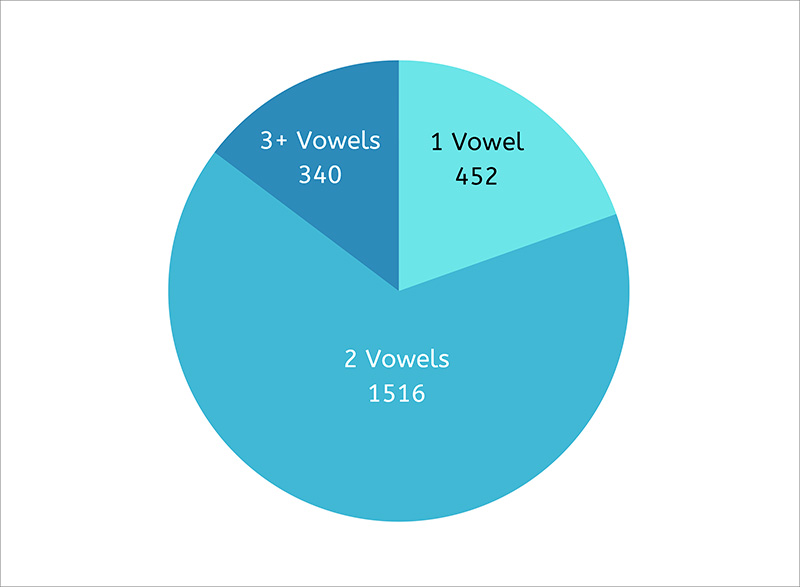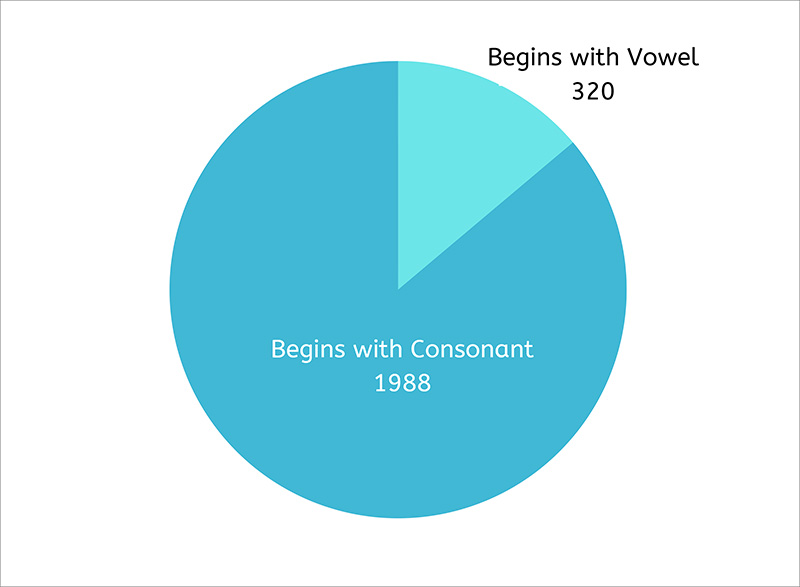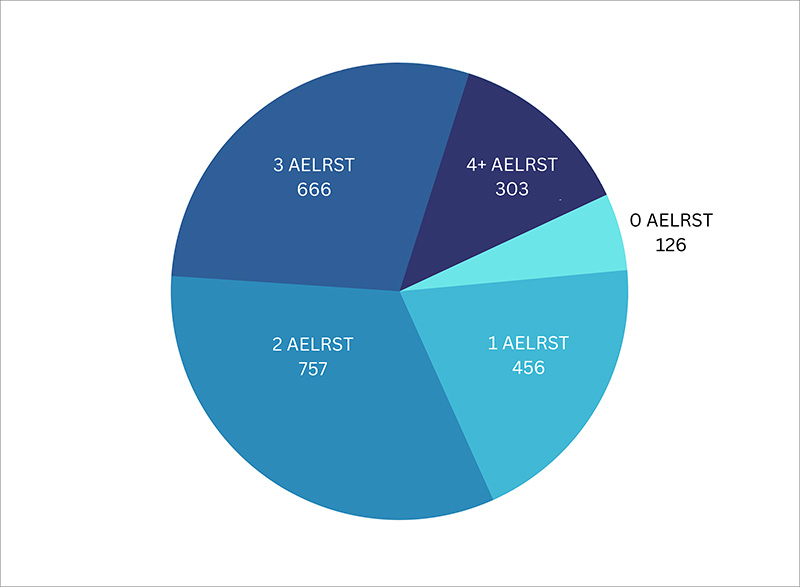Asked & Answered 16.0
Here is a banquet table of cerebral cooking for your Thanksgiving enjoyment. Spoon out a serving or three and let them melt in your mind. Answers revealed down the road…
1A tireless Thanksgiving traveler drove 3,340 miles east, then 377 miles north, then another 3,340 miles east, then 377 miles south, only to find himself back where he started. How much time did he spend texting-while-driving?
2I have a vivid memory of the time, early in my Kodak career, that a research scientist explained to me how “yellow is not a color.” I was crushed — yellow is my favorite! — but what did he mean? And why was he so damn dogmatic about it?
3How much ice cream would you have to eat to cause your entire brain to freeze?
 4In the game of 8-ball, 15 billiard balls are arranged in a triangle, with a ball at the apex, two balls nested behind it, three balls behind those, etc. The 8-ball (black) is placed in the center of the middle row — in the #5 spot — to reduce the chance of sinking it on the break (see image). But the 8-ball is not perfectly centered, as it does not occupy the #8 spot in the rack. (The image shows a 3-ball in that spot.)
4In the game of 8-ball, 15 billiard balls are arranged in a triangle, with a ball at the apex, two balls nested behind it, three balls behind those, etc. The 8-ball (black) is placed in the center of the middle row — in the #5 spot — to reduce the chance of sinking it on the break (see image). But the 8-ball is not perfectly centered, as it does not occupy the #8 spot in the rack. (The image shows a 3-ball in that spot.)
If we were to consider racks of more than 15 balls, could we find a triangular rack in which the middle-numbered ball, i.e., the black ball, could be placed in the center of its row and in its own numbered spot?
Consider a six-row rack. It would have 21 balls, and the 11-ball would be the “black” ball. We would want the 11-ball, when placed in the #11 spot in the rack, to be in the center of its row, behind the apex ball. This particular case does not work, but you get the idea.
I have fun memories of Thanksgiving 8-ball games at our children’s grandparents’ house.
5Of the 50 U.S. states, do any two adjoin each other geographically and alphabetically? If not, what’s the closest such approach? Thanksgiving travelers want to know.
6Just for fun, let’s expand the question posed in (5) to the nations of Europe, although Europeans (and Jehovah’s Witnesses) do not celebrate Thanksgiving.
7In the “Hole in One” game on The Price is Right, contestants have to rank six items from least expensive to most expensive, after which they make a short putt to try to win a new car. Now, here is your chance to win a car and drive it hundreds of miles or more to see your loved ones on Thanksgiving. Rank the items below from least to most expensive. Score $5,000 whenever an item in your list is more expensive than all the previous items in your list.
(a) One Space-X launch
(b) One year’s compensation for Barry McCarthy, CEO of Peloton
(c) The annual U.S. budget for gun violence research
(d) The annual U.S. military expenditure for Viagra
(e) The world’s oldest (1100 years) Hebrew Bible
(f) Oprah Winfrey’s Montecito, California mansion
8At precisely 11 o’clock on Thanksgiving night, the angle between the two hands of an analog clock is exactly 30 degrees. How soon, if ever, will the hands form the same angle?
9“Over the river and through the wood, to Grandmother’s house we go,” goes the verse. Question: What happened to Grandfather?
(a) Got trampled by the horse.
(b) Got run over by the sleigh.
(c) Got lost in the white and drifted snow.
(d) Got bumped off by Grandmother in the 1890s.
Okay, I promised answers, and here they are. Brace yourselves.
1A person who drives 3,340 miles east, 377 miles north, another 3,340 miles east, then 377 miles south to return to his starting point, is likely to be on the surface of a body that is 6,700-plus miles in circumference. The most likely candidate is the Earth’s Moon.
Our holiday traveler started his journey at 10° South lunar latitude. The first eastward leg of his trip took him halfway around the moon. The second leg took him from 10° South to 10° North. The third leg completed his circuit around the moon. The fourth and final leg returned him to 10° South, where he started.
So the answer to how much time he spent texting-while-driving is 50 percent. Being that one side of the moon always faces Earth and the other side never does, he would have spent exactly half his journey on the Earth-facing side. Our answer presumes constant speed, no communication from the “dark side” of the moon, and the human proclivity to be on one’s phone at all times.
And after all that, the turkey was still frozen.
2I was told by one photo-chemist that yellow was not a “color” but instead a “response” created in one’s brain by the stimulation of a particular ratio of red- and green-sensitive receptors in the cones of our retinas. In his view, the only “true” colors were red, green and blue, with every other hue simply products of our mind. I wasn’t really swayed by his reductionist argument then and I remain unconvinced now. If “yellow” is meaningless, then so is “hot” (a sensory combination of “cold” and “warm” signals) and who knows how many other states-of-mind.
Why was this photochemist so dogmatic about yellow? Well, he was the kind of scientist Kodak hired aplenty, persons who thought silver-based technology was just so good that everyday people did not even begin to appreciate its quality, and then felt shocked — even betrayed! — that fateful day when those everyday people decided that mediocre-but-free digital photos were just as useful as expensive shot-on-film and printed-on-paper ones.
3How much ice cream would one have to eat for your entire brain to freeze? May I say, this is a freshman chemical-engineering kind of problem, or it was when I went to college and did some chemical engineering on my own brain. An average adult brain weighs 3 lbs and is maintained at a temperature of 98.6°F. To make it freeze, one first has to cool the brain from 98.6° to 32° (this is called sensible heat though it has nothing to do with being sensible) and then extract additional heat (called latent heat even though it isn’t hiding anywhere) to turn the brain’s water into ice.
If we assume the brain is almost entirely water (Trump’s brain is a mix of rocks and air, so this doesn’t apply to him), then the sensible heat part would be Qs = m·c·ΔT or, the mass of the brain times the heat capacity of the brain (i.e., water) times the temperature change. In BTU (I ♥ British Thermal Units), this would be 3 lb x 1 BTU/lb/degree x 66.6 degrees or 199.8 BTU. Let’s just call it an even 200 BTU. And aren’t you glad this paragraph is over.
The latent heat needed to freeze 1 lb of water at 32°F is 144 BTU (just a fact of nature), so it will take 432 BTU to crystallize a 3 lb adult brain. This means the total heat that must be extracted to cause brain freeze is 632 BTU.
Ice cream also has sensible and latent heat. Ice cream must first warm up from, let’s say, 5° to 32° (absorbing 27 degrees worth of sensible heat) before it can melt, via latent heat. We need to equate the heat needed to melt ice cream with that needed to freeze a brain, and here is that equation (where M is the unknown mass of ice cream):
632 BTU = M · 1 BTU/lb/F · 27F + M · 144 BTU/lb
The solution to this equation is M = 3.7 lbs ice cream. Since water weighs 8.34 lbs/gallon, this would be equivalent to 0.44 gallons of air-free ice cream. However! Being that most ice cream is 45% air (if you learned anything here, let it be that), one would need to ingest 0.44 / (1 – 0.45) = 0.8 gallons of direct-from-the-carton ice cream to produce a total brain freeze, if all the heat needed to melt the ice cream came directly from your brain.
Moral: Don’t even think about opening that second half-gallon. Unless you’re Trump, and in that case, what more harm could it do?
4Billiards and recreational mathematics. I didn’t think I would be getting this deep when I posed this question, but too late now. We are looking for a triangular number of the form n = r(r+1)/2, where n is the total number of balls, r is the number of rows in the rack, and the numerically-middle “black ball” — number (n+1)/2 — is located in the middle of its row (i.e., behind the apex ball) and in its numerical-order spot in the rack.
The first thing we should note is that n, the total number of balls, must be odd, being that the black ball divides the set of balls into equal groups of solids and stripes. Furthermore, the numerically-middle black ball must be, by necessity, in an odd-numbered row for it to be in the center of its row.
 The only “black ball” numbers that qualify based on these criteria are the centered square numbers (c = 1, 5, 13, 25, 41, 61, etc. …) as illustrated in this diagram. The formula is c = [(r+1)^2 + (r-1)^2] /4 where r is one of the odd rows of the billiards rack.
The only “black ball” numbers that qualify based on these criteria are the centered square numbers (c = 1, 5, 13, 25, 41, 61, etc. …) as illustrated in this diagram. The formula is c = [(r+1)^2 + (r-1)^2] /4 where r is one of the odd rows of the billiards rack.
At this point, I decided the easiest thing to do was to generate a list of triangular numbers (n) and a list of the centered square numbers (c), and look for any cases where c = (n+1)/2. In such cases, the black ball would be centrally-located both numerically and positionally.
I found one such case and then stopped looking. The solution I found is n = 1,225 balls, arranged in a 49-row rack. Ball #613 is numerically in the middle, is positioned centrally in the rack, and occupies the 613th spot in the rack. Below is a diagram of this rack, with Ball #613 painted black. I dare you to break!
 5Two pairs of U.S. states are adjacent both alphabetically and geographically: Florida-Georgia and Illinois-Indiana. Iowa-Kansas is a near (40 miles) miss.
5Two pairs of U.S. states are adjacent both alphabetically and geographically: Florida-Georgia and Illinois-Indiana. Iowa-Kansas is a near (40 miles) miss.
6With respect to European nations, my first thought was that Estonia-Finland were a doubly-adjacent pair, but that is not the case — while they both border the Gulf of Finland, their territorial waters do not meet. However! If we instead consider the endonyms of the European nations — i.e., how they refer to themselves in their own language — then there are two such doubly-adjacent nations: Danmark-Deutschland (Denmark-Germany) and Suomi-Sverige (Finland-Sweden).
7Our six Hole-in-One items, from least expensive to most expensive:
- The annual U.S. budget for gun violence research: $25 million
- The world’s oldest (1100 years) Hebrew Bible: $37 million
- The annual U.S. military expenditure for Viagra: $41 million
- One Space-X launch: $67 million
- Oprah Winfrey’s Montecito, California mansion: $90 million
- One year’s compensation for Barry McCarthy, CEO of Peloton: $168 million
If you ranked all of these items in the correct order, then please go out and buy whatever brand new car you want.
8After 11:00:00, the next time the clock hands will form a 30 degree angle is 11:54:33. (I didn’t say that the hour and minute hands had to be in the same relative position.) Credit to onlinetools.com for making this problem easier to solve.
9The poem “The New-England Boy’s Song about Thanksgiving Day” was penned by Lydia Maria Child in 1844. In her original version, the visitors were in fact headed to Grandfather’s house. But in the 1897 “Prang Primary Course in Art Education,” Mary Dana Hicks refers to it, for the first time I can document, as Grandmother’s house. Clearly, something unsavory befell Grandfather around then, and I blame Grandmother.
May you all have a safe and happy Thanksgiving in whomever’s house you spend it.









